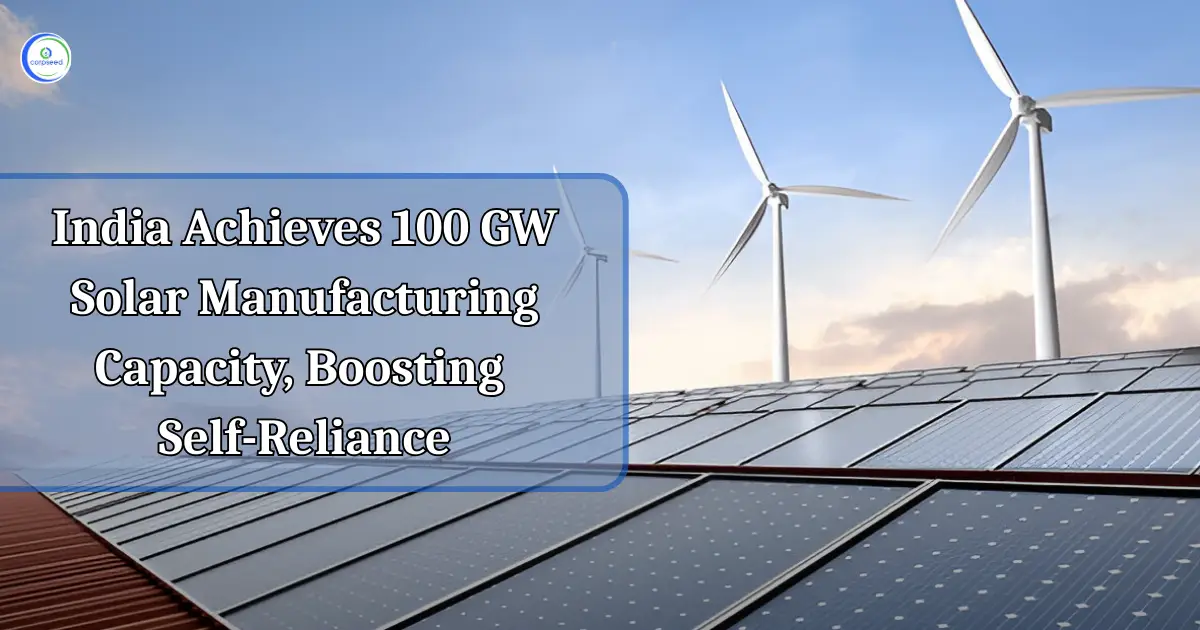India has achieved a major milestone in its solar manufacturing journey. The country’s domestic solar equipment manufacturing capacity has grown from just 2.3 Gigawatts (GW) in 2014 to 100 GW by 2025. Experts call this development "historic" and a big step towards self-reliant India.
Table of Contents
Union Minister for New and Renewable Energy, Shri Pralhad Joshi praised the leadership of Prime Minister Shri Narendra Modi. He said government schemes like the Production Linked Incentive (PLI) program for high-performance solar modules helped boost this growth. This rise in capacity is creating a robust and self-sufficient solar manufacturing ecosystem in India.
Government Support Drives Solar Manufacturing Growth
India’s growth from 2.3 GW to 100 GW capacity is a result of focused government policies. The Rs 24,000 crore (about US$2.74 billion) PLI scheme offers concessions to manufacturers to form solar cells and modules domestically. Also, government programs like PM-KUSUM Surya Ghar Muft Bijli Yojana need solar equipment to be locally sourced.
These measures ensure sustained demand for solar products. They also boost companies to invest in expanding their factories. As a result, many manufacturers are generating key raw materials within India itself, strengthening the entire supply chain.
Santosh Kamath, Managing Director of Alvarez & Marsal, said the development will help fulfill India’s huge domestic solar requirements. It also positions India to export solar equipment to other countries, opening up new business opportunities for Indian firms.
Building a Robust Renewable Energy Ecosystem
Experts believe this 100 GW milestone is just the beginning. To continue the momentum, India must invest more in research and development (R&D). New, high-performance solar technologies will help India stay competitive.
Growing export markets and enhancing supply chains for materials such as solar glass and ethylene vinyl acetate will also be significant. These measures will make India’s solar industry more self-reliant and resilient.
Somesh Kumar, a partner at EY India, said the country’s bold policies can help India cross the 2030 target of 500 GW of non-fossil fuel energy capacity. Developing a skilled workforce will be vital to support the rising solar manufacturing industry.
India’s achievement of 100 GW solar power generation capacity is a big step towards energy self-sufficiency. With strong government collaboration, focus on innovation and skills, India is on track to become a global leader in renewable energy manufacturing.
This portion of the site is for informational purposes only. The content is not legal advice. The statements and opinions are the expression of author, not corpseed, and have not been evaluated by corpseed for accuracy, completeness, or changes in the law.

